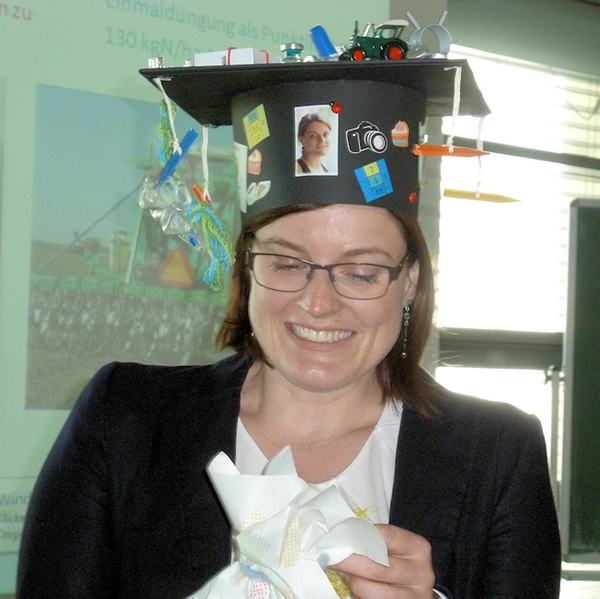
How does reduced summer precipitation affect greenhouse gas emission from agricultural soils? Can nitrous oxide (N2O) emissions from agriculture be reduced by placed N fertilization? These questions were addressed by Marianna Deppe during her dissertation project at the Thünen-Institute for Climate-Smart-Agriculture.
In collaboration with the Thünen-Institut for Biodiversity, the first project dealt with the effect of induced summer drought on fluxes of methane (CH4) and N2O, both potent greenhouse gases, between soil and atmosphere in sorghum and maize stands. Reverse effect were found: While CH4 uptake in soil increased during drought phases, N2O emissions slightly increased in winter. These results may help to predict feedback effects of greenhouse gas emissions.
In collaboration with the Julius-Kühn Institute of Soil Science and Plant Nutrition, a second project dealt with N2O formation in soil in and around ammonium (NH4+) depots of the so-called CULTAN (Controlled-uptake-longterm-ammonium-nutrition) fertilization. Field experiments with summer wheat at sandy loam and loam sites did not confirm the expected decrease in N2O emission. 15N isotope tracer experiments showed that (1) the formation of nitrate from ammonium fertilizer was not effectively inhibited and (2) only a small part of the N2O emitted stemmed from the applied fertilizer. Increased yields with CULTAN fertilization show the potential for reduced N fertilization and thus imply an indirect mitigation potential for greenhouse gas emissions.

![[Translate to English:] [Translate to English:]](/media/_processed_/6/4/csm_titel_CO2Kampagne8_afeea2273e.png)
![[Translate to English:] [Translate to English:]](/media/_processed_/4/1/csm_titel_93px_CO2Kampagne8_9b0f3354d4.png)



